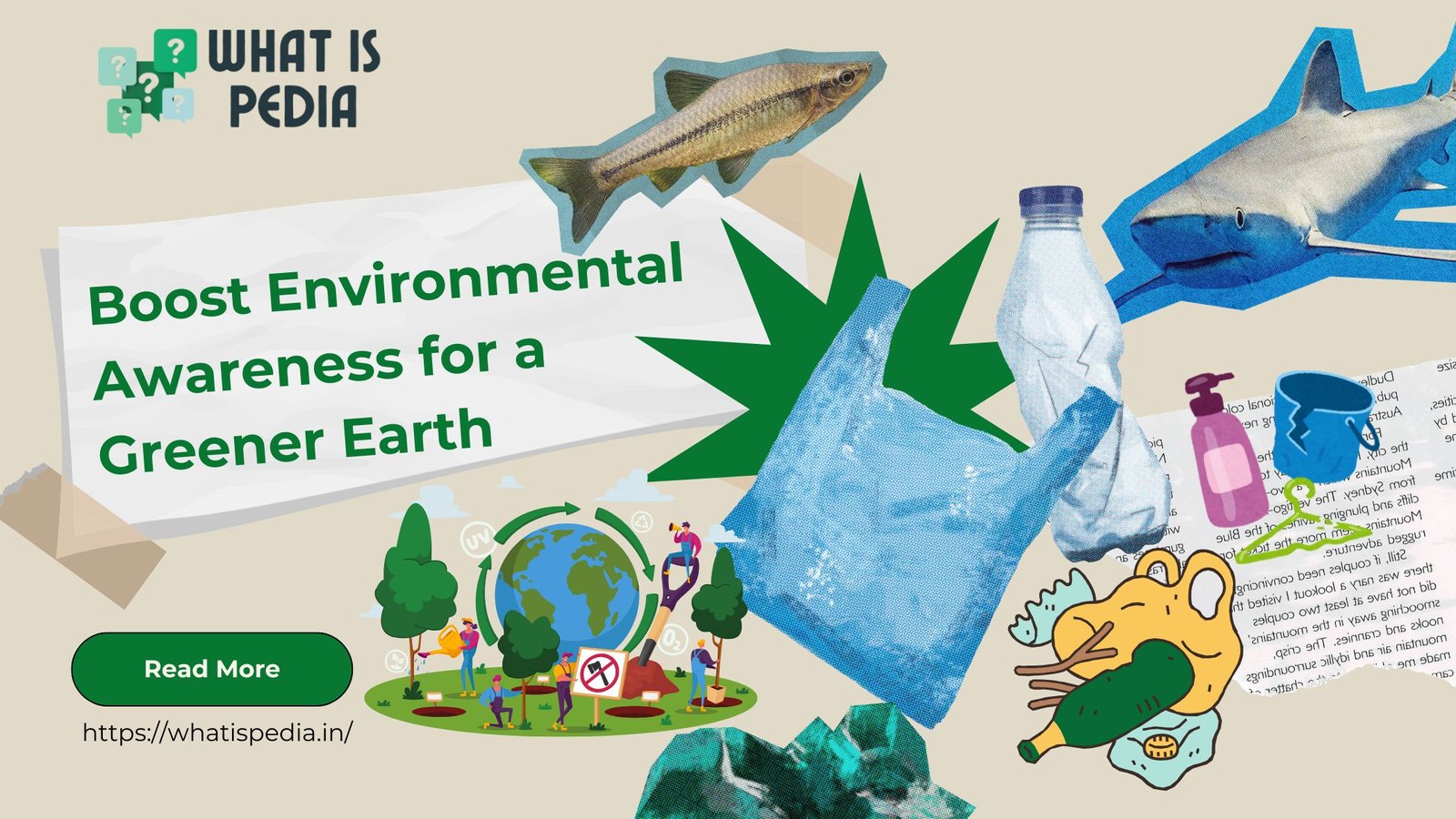Introduction
Environmental awareness is essential for ensuring a sustainable future for our planet. It revolves around understanding the effects of our actions on the natural world and advocating for practices that promote ecological health. This blog aims to delve into the various facets of environmental awareness, exploring its significance and how both individuals and communities can contribute positively. We’ll look at the role education plays, the impact of technology, and the power of community engagement in fostering a deeper connection with and responsibility for our environment. By increasing our environmental consciousness, we can take meaningful steps toward a more sustainable and healthier Earth.
Exploring the Essence of Environmental Awareness
Environmental awareness involves understanding the impact of human activities on the planet and recognizing the importance of protecting natural resources for future generations. It encompasses knowledge about the delicate balance of ecosystems and the steps necessary to maintain or restore that balance. This awareness motivates individuals, communities, and governments to engage in behaviors and create policies that contribute to sustainable environmental practices. From recycling and conserving energy to advocating for policies that reduce environmental degradation, environmental awareness drives the actions needed to ensure a healthy and sustainable planet.
Causes of Environmental Pollution
Environmental pollution results from a variety of factors that degrade the quality of air, water, and land. Here are some primary causes:
- Industrial Emissions: Factories release large amounts of pollutants, including sulfur dioxide, carbon monoxide, and nitrogen oxides, into the air. These emissions can contribute to air pollution and acid rain.
- Vehicle Emissions: The combustion engines of cars, trucks, and buses emit carbon monoxide, nitrogen oxides, and other pollutants that contribute significantly to air pollution, especially in urban areas.
- Agricultural Activities: The use of pesticides, insecticides, and fertilizers in agricultural practices is a major source of soil and water pollution. Runoff from these chemicals contaminates streams, rivers, and lakes and affects aquatic ecosystems.
- Waste Disposal: Improper disposal of industrial and household waste can lead to contamination of the environment. Landfills leak harmful chemicals into the soil and water, while incineration of waste produces airborne pollutants.
- Deforestation: Clearing trees for agriculture or urban development reduces the Earth’s capacity to absorb carbon dioxide, contributing to increased carbon levels in the atmosphere and global warming.
- Plastic Pollution: Plastics that are thrown away and not recycled can end up in marine and terrestrial environments, where they release toxic chemicals and microplastics that harm wildlife and ecosystems.
- Residential Emissions: The use of heating and cooling systems, as well as products like paints and solvents in homes, contribute to air pollution through the release of volatile organic compounds (VOCs).
- Construction Dust: Construction sites often generate significant amounts of dust and other particulates, which can contribute to air quality problems.
- Mining Operations: Mining activities expose and distribute massive quantities of earth, releasing particulate matter and chemicals into the environment which can pollute air and water sources.
- Energy Production: Power plants, especially those that burn fossil fuels, are major sources of air and water pollution. They release pollutants like sulfur dioxide and mercury into the atmosphere.
Understanding these causes helps in identifying targeted strategies to reduce environmental pollution effectively.
Why Environmental Awareness is Important
- Understanding Our Impact: Environmental awareness illuminates the effects of our daily habits on the natural world, underscoring the importance of mindful interactions with the environment.
- Protecting Natural Resources: It emphasizes the need to safeguard our air, water, and land, ensuring that these vital resources remain unspoiled for future generations.
- Promoting Sustainable Practices: By being environmentally aware, we are more likely to adopt practices that reduce waste, conserve energy, and maintain the natural balance of ecosystems.
- Encouraging Conservation Efforts: Awareness leads to actions that preserve diverse habitats and wildlife, which are essential for ecological health and biodiversity.
- Inspiring Community Action: Heightened awareness fosters community initiatives aimed at environmental protection, from local cleanups to global advocacy.
- Shaping Policy Changes: A well-informed public can influence environmental policies that prioritize sustainable development and reduce ecological footprints.
- Educating Future Generations: It ensures that young people learn the value of the environment early on, equipping them with the knowledge to make eco-friendly choices.
- Fostering Global Cooperation: Environmental issues transcend borders; global awareness is crucial for international cooperation on climate change, pollution control, and species protection.
How to Promote Environmental Awareness
Promoting environmental awareness involves educating and motivating people to engage in practices that benefit the environment. Here are effective strategies to enhance environmental consciousness in various communities:
Educate Through Various Platforms
- School Programs: Implement environmental education in school curriculums to teach students about sustainability from a young age.
- Workshops and Seminars: Organize workshops and seminars that focus on specific environmental issues and sustainable practices.
- Online Courses: Develop accessible online courses that cover broad topics of environmental science and conservation methods.
Engage the Community
- Community Projects: Initiate local environmental projects like tree planting, community gardens, or clean-up days to encourage active participation.
- Public Events: Host public events such as environmental fairs where organizations can demonstrate green technologies and practices.
- Volunteer Programs: Establish volunteer programs with local environmental organizations to increase hands-on involvement.
Utilize Media and Technology
- Social Media Campaigns: Use platforms like Instagram, Facebook, and Twitter to share information, success stories, and practical tips about living sustainably.
- Mobile Apps: Develop apps that offer users easy access to recycling information, product life cycles, and carbon footprint calculators.
- Blogging and Vlogging: Create engaging content that discusses environmental issues, solutions, and everyday actions that individuals can take.
Partner with Businesses
- Corporate Sponsorships: Partner with companies to sponsor environmental campaigns that align with their corporate social responsibility (CSR) goals.
- Green Business Practices: Encourage businesses to adopt sustainable practices that reduce waste, conserve energy, and use eco-friendly materials.
- Eco-friendly Products: Promote businesses that offer products made with sustainable materials or that adopt fair trade and ethical production standards.
Legislative Advocacy
- Policy Advocacy: Support or initiate advocacy groups that push for environmental laws and policies at local, state, and national levels.
- Public Speaking: Engage in public speaking opportunities at town halls, legislative sessions, and community centers to spread awareness about critical environmental issues.
- Voter Education: Educate voters on how different policies affect the environment and encourage them to support environmentally friendly legislators and initiatives.
By implementing these strategies, we can significantly boost environmental awareness and encourage a culture of sustainability that can lead to lasting positive impacts on our planet.
Examples of Environmental Issues
Environmental issues are diverse and widespread, affecting every corner of the globe. Here are some key examples:
Climate Change
Climate change signifies enduring variations and transformations in global temperatures and weather conditions over time. These changes are primarily driven by human activities, such as the burning of fossil fuels, which increase the concentration of greenhouse gases in the atmosphere. This results in global warming, sea-level rise, and extreme weather events.
Air Pollution
Air pollution is caused by the release of pollutants into the atmosphere, which can come from industrial activities, vehicle emissions, and natural sources such as volcanic eruptions. Common pollutants include carbon monoxide, sulfur dioxide, nitrogen oxides, and particulate matter. This pollution can cause respiratory diseases, heart conditions, and can even affect the brain.
Water Pollution
Water pollution occurs when harmful substances—like chemicals, industrial effluents, or contaminated runoff—enter water bodies such as rivers, lakes, and oceans, making them toxic for aquatic life and unsafe for human consumption. Industrial discharge, agricultural runoff, and improper waste management are key contributors to environmental pollution.
Deforestation
Deforestation involves the clearing of forested lands, often to make way for agriculture, urban development, or logging. This destruction not only leads to the loss of habitat for millions of species but also disrupts the carbon cycle, contributing to global warming.
Biodiversity Loss
Biodiversity loss is the decline and extinction of plant and animal species at an accelerated rate. It’s caused by habitat destruction, climate change, pollution, overfishing, and poaching. Losing biodiversity affects ecosystem productivity and stability, reducing the resilience of ecosystems to environmental changes.
Ocean Acidification
The ocean takes in roughly 25% of the carbon dioxide released into the air. When CO2 dissolves in seawater, it reacts to form carbonic acid, which lowers the pH of ocean waters, leading to ocean acidification. This change in acidity can harm marine life, particularly organisms like corals and shellfish, which rely on calcium carbonate for their skeletal structures.
Plastic Pollution
Plastic pollution occurs when plastic waste builds up in the environment, harming wildlife, natural habitats, and human health. These pollutants come in various sizes and are classified as micro, meso, or macro debris, depending on their dimensions. They are pervasive in terrestrial ecosystems as well as water bodies.
Urban Sprawl
Urban sprawl refers to the uncontrolled expansion of urban areas. The environmental impacts include increased transportation emissions, loss of wildlife habitats, and altered local climates. Additionally, sprawl can lead to more energy consumption and increased surface runoff which pollutes water bodies.
These issues highlight the interconnectedness of human activities and the environment, stressing the urgency for sustainable practices to mitigate their adverse effects. Each of these problems requires comprehensive solutions that involve policy changes, technological advancements, and individual actions to promote sustainability.
Conclusion: The Path Forward for Environmental Awareness
Taking Action at an Individual Level
Individual actions play a pivotal role in advancing environmental sustainability. By making simple changes like reducing waste, conserving water, and opting for public transport, each person contributes to a larger, positive impact on the environment. These small steps not only help reduce one’s carbon footprint but also set a precedent for responsible living. Encouraging such behaviors through education and awareness can drive a significant shift towards sustainability.
Collective Efforts and Policy Advocacy
The cumulative effect of individual efforts is powerful, but for substantial change, collective action and policy advocacy are essential. Mobilizing communities and urging governments to enact and enforce environmental protections can lead to transformative results. Advocacy plays a crucial role in shaping policies that prioritize sustainability and protect natural resources, ensuring that environmental conservation is embedded in legal and corporate frameworks.
In conclusion, environmental awareness transcends merely understanding the issues; it requires active and informed participation in mitigating environmental impacts. It’s about making choices that not only benefit individual lifestyles but also contribute to the global effort of sustaining our natural world. For more insightful discussions on environmental issues and active engagement in conservation efforts, visit Whatispedia.





